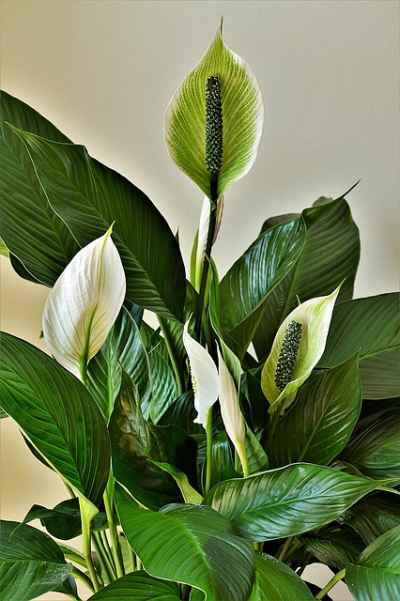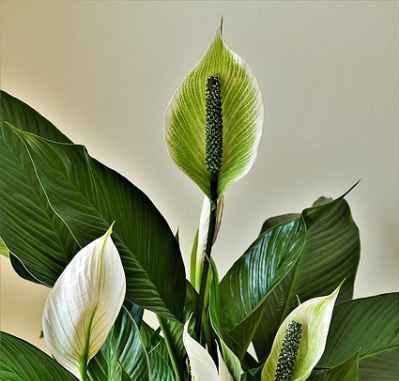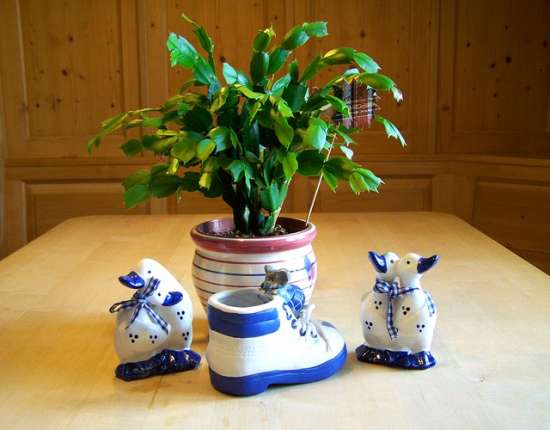Peace lilies (scientific name-spathiphyllum) are popularly known as closet plants as they can grow indoors in offices and homes. Peace lilies are a type of tropical house plant which is easy to take care of.They make a fantastic option for house plants and add a hint of brightness in offices and homes. They add some texture to the room and also clean the air of the room.
House lilies have dark green leaves and white flowers; however, their discerning feature is a white leaf bract that grows hooded over the flowers.
How long can a peaceful lily go without water?

Are you a new plant parent and need help deciding on a watering schedule, or are you going out of the station without anyone to water your plants?Don’t worry; below, we have provided the approximate watering schedule and how long water lilies can survive without water.
Are you wondering how long houseplants can go without water? Most houseplants can live up to 2-3 weeks without water and need little to medium sunlight to survive. However, these needs can change from plant to plant and the weather at your place.
Here are the factors that influence the water needs of houseplants-
- Plant type
- Plant size
- Plant age
- Growing medium and condition
- Indoor conditions-light, temperature, humidity
- Regional climate
- Season of the year
- Current weather
- Pot size and material
- Growing phase
Peace lilies should be watered approximately every 5-7 days to ensure good health. They can survive for about 10-12 days without water maximum; they would wilt any more than this.
Watering schedule-once every 5-7 days
Can go without water for 10-12 days
Also Read: Why Are the Leaves on My Christmas Cactus Limp (Drooping Leaves)?
What would happen to a plant without water?
A plant will die without water. Plants use sunlight, carbon dioxide, and water to process their food (photosynthesis), and if not watered, they wouldn’t be able to function or process food and thus die.
Water is also needed to make a plant’s tissue called turgor rigid. Turgor uses water to keep the plants upright. Lack of water will weaken the turgor, and the plant would droop and wilt.
If a plant is not watered for a more extended time, the roots would be affected, and the plant may never recover.
Also Read: Mold on Microgreens
Peace lily plant care
Now that you know plant lilies’ water needs let talk about some more tips for taking good care of your closet plants.
Water
A widespread and beginner mistake in taking care of houseplants like plant lilies is over watering. Houseplants like water lilies are way more tolerant of under watering than over watering.
Peace lilies are closet plants; they need little light and little water to survive. Water lilies are very drought tolerant and cannot handle over watering.
A quick way to check if your peace lily needs water is to touch its soil once a week; if it is damp, do not water, and if the soil is dry, water the peace lily. This method will prevent over watering.
Light
Peace lilies need indirect sunlight. If the leaves turn yellow, it is a sign that the plant is getting too much light.
Fertilizer
Like water, peace lilies do not need frequent fertilizing. Fertilizing them with a good and balanced fertilizer once to twice a year will be enough. Summer months are the best for fertilizing.
Repotting
Peace lilies would also benefit from reporting or dividing when they have outgrown their pots/containers. Signs peace lily needs repotting-
- Dropping less than a week after being watered
- Crowded leaf growth
- Deformed leaf growth
If you are repotting your plant lily, use a container that is at least. Inches bigger than the previous container. On the other hand, if you are dividing, use a knife to cut through the middle of the root ball and repeat each part in its container.
Cleaning
Peace lilies leaves can be a dust magnet. Not to exaggerate, but peace lilies can accumulate a lot of dust. You would need to wipe down the leaves or wash them lightly to get rid of the dust. This will also lead to better sunlight absorption.
Use a damp cloth to wipe down the leaves or wash them, placing them underwater till the leaves get rid of the dust. Don’t use commercial leaf shine oviducts as they can clog the pores of leaves and be damaging.
Why you must have a peace lily in your home?
Peace lilies are great indoor plants and especially for those who like flowering plants without the usual hassle. They need little care, purify the air, and bloom beautifully.
Here are some reasons why you must have a peace lily-
#1 Air purifier
Peace lilies quite literally act as an air purifier. There are many pollutants present in homes, from dust to carbon monoxide, plant lilies clean them.
Harmful pollutants can cause many health problems, but cobra plants like peace lilies clean the air. According to a study by NASA, peace lilies absorb pollutants like xylene, benzene, carbon monoxide, and formaldehyde up to 60%.
#2 Easy to maintain
Peace lilies are not just a treat for the eyes but also are low maintenance. They need indirect sunlight and need to be watered only once a week. Plus, they don’t need to be regularly fertilized.
Anyone with a busy schedule or a forgetful nature can take care of it. Peace lilies work better with underwatering than overwatering, so even if you forget to water it, peace lilies will continue to thrive.
#3 Better Sleep
If you are an insomniac or have been facing trouble sleeping, consider getting a peace lily. It is beautiful to look at, filters the indoor air, and increases the level of humidity, helping one breathe better.
It absorbs airborne mold spores that can cause allergies and aid in good Sleep. Its beauty is set to bring calmness and alleviate feelings of stress. It adds positive energy to the room.
#4 Spruce up the decor
Houseplants like ace lilies are perfect to spruce up the decor of your
Room/house or office. Need some color in the room-get a peace lily, want to fill an empty space-peace lily, want to give a sophisticated look-peace lily it is.
The peace lily is chanting to look at, especially its white cage leaves, which are a perfect contrast to the deep green ones.
#5 Prevent mildew
High moisture content can lead to mildew and a moldy smell. Mold is susceptible to the kitchen, bathroom, and washrooms. Peace lily will prevent mold in high moisture areas.
Peace lilies absorb extra moisture from the surroundings and prevent dampness that could have caused mildew.
#6 Remove dust
Are you troubled by fine dust? Get a peace lily; they are dust magnets and accumulate all of the fine dust in the room on their leaves. Occasionally clean the leaves with a damp cloth or by washing them.
Conclusion
Peace lilies are a type of houseplants that need little maintenance. They need to be watered once a week and go up to 12 days without water. It is good to check if it needs watering by touching the soil; if damp, don’t water; if dry water.


